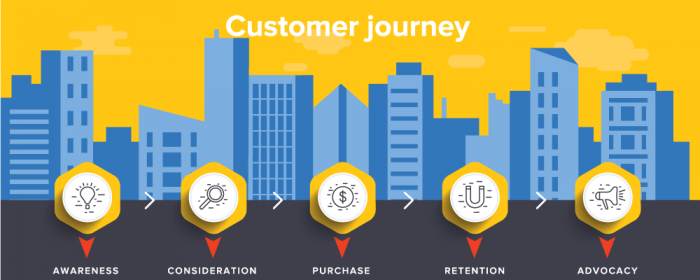Whether you are launching a new product or looking for ways to revamp your brand, the first step should be to create an impeccable go to market strategy. Developing a detailed go to market strategy forms the basis for a successful start.
Without the backing of a perfect strategy, you will not be able to break into the market. To claim your place, you should fuel your efforts and devise the perfect go to market strategy.
Proper planning and strategizing will help you identify the basics of the market, for example:
- The target audience
- The competitors
- Saturation in the market and much more.
The last thing you want to do is invest your resources, capital, and time in a fruitless, unprofitable product. The go to market plan makes sure that your product launch is a smooth ride and there are no hiccups in accomplishing the desired goals.
Let us take a look at what is go to market strategy to understand its basics.
What Is Go To Market Strategy?

What is go to market strategy? A go to market strategy highlights all the steps necessary to succeed in a new market or a different audience. It identifies ways of reaching the targeted audience and attaining an edge over the competitors.
A good gtm strategy considers multiple factors to curate a perfect plan that will lead to profitability in the future. The plan helps businesses identify the need for a new product, understand the target audience, and create a plan to attract customers and persuade them to buy it.
Purpose And Uses Of A Go To Market Plan
A good go to market plan can serve several purposes to generate revenue for a company. Once you have a go to market strategy in place, you can:
- Identify the need for the product, who is it for, and how are you going to convince your customers to buy it.
- Identify the potential issues clients might face while using the product.
- Create an outline for delivering the product to the end-user.
- Improve the product to ensure its success before it is delivered to the consumers.
- Track your progress along the way and make changes wherever necessary.
- Predict the success of the product in the market.
There are multiple uses of a go to market strategy, including:
- Launching a new product
- Introducing an existing product in a new market
- Relaunching an existing product
Why Do Businesses Need A GTM Plan?

Having a strategy in place can help you make your mark in the market. It can also help you avoid mistakes to solidify your chances of success. Furthermore, it can counter all possible reasons for failure in business to establish the standing of your product in the market.
Research says that 42% of businesses fail because there is no market for the product or services. 19% lose to their competitors, 18% fall victim to pricing issues, 14% lack good marketing strategies, 14% do not consider the needs of their customers, and 17% do not have a business model, to begin with.
Startups have a failure rate of about 90%. These figures are proof of a company’s lack of proper strategy and planning. Diving headfirst into a business without proper research and planning can result in the loss of revenue, resources, and time.
While a GTM strategy may not be your shortcut to generating immediate profits, it can help you fix the gaps and make improvements before you introduce the product to the market.
Things You Need To Know Before You Develop Your Go To Market Strategy
There are certain things that you should pay special attention to before you develop your go to market plan. These things will help you narrow down the information required to build a good gtm strategy.
Following are the crucial parts of an ideal go to market plan:
- Product-Market Fit: What problems does your product solve? Why is it needed in the market? Your product will make its mark only if it solves a problem and is needed by the consumers. Consumers will not bat an eye on a product that is not needed so, verify and validate the need for the product.
- Target audience: Who are your consumers? What do you know about them? Identifying buyers’ persona helps you narrow down your focus so that you can build effective strategies to target those customers. This involves in-depth knowledge as well as a general understanding of your consumers.
- Competitors: Who are your competitors? Is the market saturated? Once you identify your competitors, you can devise strategies to make your product better and more attractive.
- Distribution: Where and how will you distribute your product? Will you sell your product directly, through retailers, third-party distributors, a website, or other mediums?
- Pricing: What should be the price of your product? Create an appropriate pricing strategy to make sure your product is not expensive for the customer, comparatively less-pricey but generates profit for you.
The knowledge of the above will help you develop a profitable strategy so that your product launch is successful through and through.
Moving on to the main section of this article, how to create the perfect go to market strategy?
How To Develop A Perfect Go To Market Strategy?
1. Identify Your Target Market

As explained earlier, before you start developing your product and introduce it into the market, you have to narrow down the focused market for your product. This includes demographics, psychographics, competitors, ethnicity, etc.
A bad go to market strategy example of the above can be producing supercars in an underdeveloped country. While there may be a few buyers in the target country, the numbers will be too low to risk investment on such a massive scale.
You must also identify your target customers to create plans that will help you engage them and convince them to buy your product.
By understanding the demands of the market, trends, barriers to entry, etc., you can identify the market that will be most profitable for the success of your product.
2. Value Matrix
The start of your market strategy should highlight the reasons you are launching the product. It should also explain the need for the product in time, how are you going to go about it? etc.
These details in the value matrix will give an overview of your strategy. Also, it will communicate the purpose and reason for the development of the product and the needs it fulfills.
Featured Readings:
3. Develop Your Market Strategy
In this phase, you will develop strategies to create brand awareness and determine the position of your product in the market.
Your marketing strategy should include:
- Value props: What distinguishes your product from others in the market? What is the most attractive point of your product?
- Position: What is the standing of your product in the market? How would you like your product to be recognized?
- Messaging: How do you convince your buyer to buy the product? Why should a buyer consume your product?
It can also include sales material, personas, use cases, etc. The aim is to develop a general understanding of your product in the market and determine ways to create awareness about your product.
4. Determine Your Pricing Strategy
In this phase of your go to market strategy, you have to determine the pricing strategy of your product. The pricing of your product reflects your understanding of the market, competitors, and the target audience, along with the value your product delivers.
5. External Marketing Tactics
How will you market your product to the consumers? You should employ external marketing tactics to appeal to a larger audience.
External marketing tactics can include:
- Branding
- Lead generation
- Additional content
- Website
- Ads, events, etc.
In this step, you will experiment with various marketing tactics via different mediums to find out the most appropriate platform so that you can advertise your product accordingly.
6. Understand The Buyer’s Journey

One of the steps in creating your go to strategy is understanding the journey of your buyer. This journey maps the process that ends with the purchase of the product.
The stages included in this phase are:
- Awareness stage: Make the buyer aware of your product via ads, blogs, videos, etc.
- Consideration Stage: Describe how this product can solve their issue using tutorials, webinars, etc.
- Decision Stage: Help them decide by offering a demo, custom quotes, etc.
Your focus in go to market strategy should not only be on the product launch but also to determine how to move the prospective client from awareness to the decision stage.
7. Creating A Sales Strategy
In this part of developing the go to market strategy, you will identify ways to introduce your product in the market. This is a crucial step since it is directly linked with the profitability of the product.
The core elements included in this section include:
- Client Acquisition: what are the best ways of finding new customers? Social media? Emails? Calls?
- Training Support: How to train your sales representatives so that they can market your product in the most attractive way?
- Tools and Resources: Required tools that can help your sales team engage the customers and manage the relationship efficiently.
8. Sync With Support Team

Whenever you launch a never-seen-before product, you will arouse the curiosity of clients. As a result, you can expect various questions and issues. How will you handle these issues and answer the questions of the customers?
In this step, you will identify ways to answer customers’ queries. Crucial items included in this part are:
- Tools to build and manage customer relationships.
- Onboarding and support to help users understand the functioning and features of the product.
- Retention strategies to make sure you do not lose your customers.
- Identify metrics to measure customer satisfaction.
9. Identify The Position Of Your Product In The Roadmap
Your responsibility does not end once you launch the product into the market, in fact, this is the start of the party. Once you have introduced the product, you have to identify:
- The priority status of the product
- Ways to handle market feedback
- Ways to keep stakeholders informed about the latest developments in the product launch
10. Determine Success Metrics
How will a company determine whether the product launch has been successful or not? This requires the use of certain success metrics.
These metrics can help you determine whether the product has fulfilled its purpose and if you have fulfilled your goals or not. Success metrics must be meaningful, measurable, operational, and motivational.
11. Clarify Your Budget Needs
As we mentioned earlier, your job does not end after the launch of the project. You have to stay connected with the product to ensure that it stays in the market and is a source of revenue for your company. This involves clarifying the budget and resources your product will need after it enters the market.
The factors included in these needs include time, money, and any other factors that can impact the daily lives of the stakeholders.
This is not THE END! The Journey Has Just Started
Bringing a new product to the market seems like a Herculean task. The journey is rough, and the road is bumpy, but the guidelines listed above can significantly improve your pathway. Creating a go to market strategy will lower down the risks and increase the probability of success.
Is there anything else that you would like to add? Let us know in the comments below.
More resources you may like:

